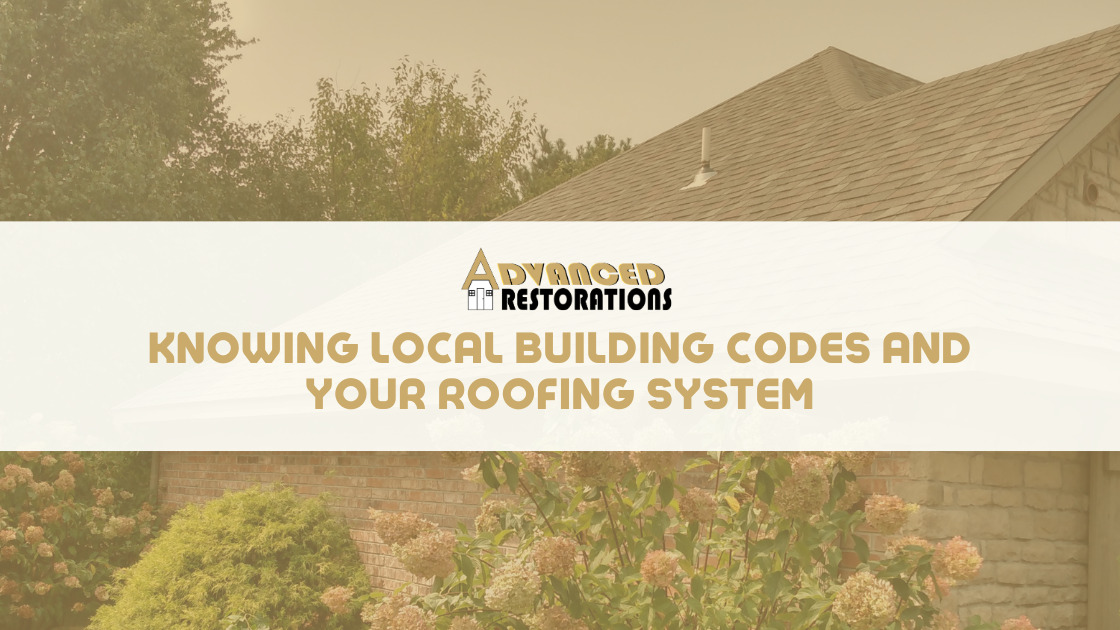
The following codes items are extremely important when completing a roof replacement project. We hope that this information helps you when the time comes to replace your roofing system.
When we look at codes that govern the application of a residential roofing system, we have to start by first familiarizing ourselves with the manufacturer specifications of the material we are installing. Most of these specifications are geared toward the installation of asphalt shingles and membrane products as that is the most common type of installation. Reach out to your local building authority to alleviate any questions pertaining to your specific project.
Code 904.1 makes the manufacturer specified steps for installation a code requirement. Oftentimes, a material manufacturer will print the installation procedures for their products on the product packaging. You can also find complete installation procedures on most material manufacturer’s websites. And as always, choosing a competent and certified contractor can help alleviate your worries and concerns.
Code 803.1 addresses lumber requirements for roof sheathing. The typical home will require OSB or Plywood Sheathing Lumber measuring no less than 5/8” in thickness. The sheathing must be properly secured. During a roof replacement, it is possible that sheathing becomes loose. In this case, the sheathing must be re-nailed to satisfy code R 905.2.1.
Asphalt shingles are the most common roofing material installed on residential homes, and they are also the most common roofing material that is installed incorrectly. One of the most common mistakes is the application of asphalt shingles on a roofing plane in which the slope is less than two units vertical over 12 units horizontal. Per code R 905.2.2, asphalt shingles should never be installed on a roof plane that has a slope of less than 2 units vertical over 12 units horizontal (2 over 12 pitch).
In some municipalities and locales, the use of an ice barrier is required along the eaves of a home. Code R 905.2.7.1 identifies how the ice barrier should be constructed and refers to the section in the code book that helps identify whether or not a home requires an ice barrier to be installed. Be sure that you reach out to your local building authority to see whether or not your home requires an ice barrier to be installed.
When installing asphalt shingles on a home that has valley roofing features, you are required to use some sort of valley lining. Code R 905.2.8.2 allows using one of the three different Lining Materials. These materials are valley metal flashing, rolled roofing, or ice and water membrane. Since the vast majority of manufacturers specify using their ice and water membrane, applying ice and water membrane in the valleys is the best option.
The roof replacement process requires more than just the removal and replacement of shingles, and the proper replacement of all components of your roofing system is vital to the roofing system’s functionality and longevity. Code R 907.5 addresses reinstallation of your roofing systems exiting components. Things such as drip edge, side wall flashing, edgings, outlets, and vents must be replaced when rusted, damaged, or deteriorated in any way. This means that your roofing system should be replaced completely.
Many homes have fireplaces which means that there is more than likely a chimney penetrating the roofing system. Depending on the size of your chimney, the installation of a cricket may be required. Code R 10 03.2 outlines when a cricket is needed. A chimney that measures 30” or more on the side facing the ridge requires a cricket to be installed.
This is just a brief list of codes that pertain to a roof replacement project. As you can see, there are many facets of your project that are imperative to the functionality and longevity of your roofing system. This is why it is crucial that you choose a competent contractor who is versed in both the manufacturer specifications of the materials being installed and the local building regulations that pertain to your project. If you have any questions about what codes could impact your roof replacement project, then be sure to reach out to your local building authorities at both the municipal and/or county level. We hope that you find this information helpful, and we wish you all the best with your roof replacement project.
We dedicate ourselves to providing homeowners peace of mind by offering complimentary inspections. With years of roofing experience, we take pride in following all local building codes, ensuring that your home has a properly installed roofing system preventing long term damage before it is too late!
Contact us today to schedule a complimentary inspection!
***Disclosure***
The information in the article reflects proper roofing system installation for areas that have adopted International Residential Code 2012/2018 for their local building enforcement. Be sure that you have verified with your local building authority what regulations are pertinent to your specific project.
